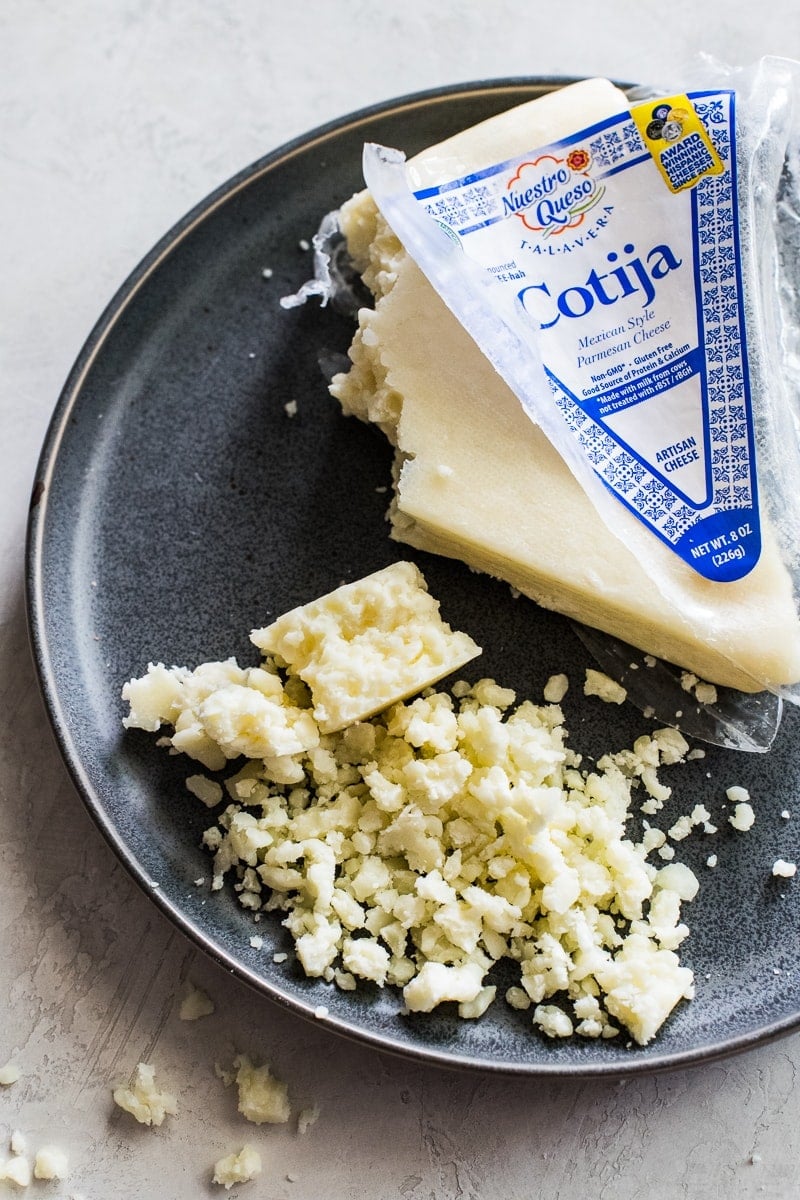Cotjia cheese is a popular salty and crumbly cheese used in many Mexican recipes to enhance savory dishes. Try it on tacos, enchiladas, tostadas, and soups!

If you like a good salty, crumbly cheese, then you’ll love the popular Mexican cotija cheese! I use it all the time in my recipes, and it’s one of my favorites.
What Is Cotija Cheese?
Cotija is a Mexican cheese made from cow’s milk that’s salty in flavor and crumbly in texture. Named after the town of Cotija in the state of Michoacan, cotija cheese comes in two different types – fresh and aged (or añejo).
Though both types are relatively salty, the fresh version is soft, while the aged version is much harder, similar to Parmesan.
What does Cotjia Cheese Taste Like?
Cotija has a strong and salty flavor. It’s very similar to feta cheese in that they’re both salty, bold, and tangy. Fresh cotija has a softer and fluffy texture, whereas aged cotija has a harder crumb and a stronger flavor.
Cotija Versus Queso Fresco
Cotija and queso fresco are commonly used interchangeably. They’re both crumbling Mexican cheeses and are used in the same way. Queso fresco has a much more mild and milkier flavor and is creamier than cotija. They both achieve a similar texture and taste, so feel free to swap one for the other.
How to Use Cotija Cheese
Cotjia cheese doesn’t melt, making it best as a finishing cheese. It’s great for topping tacos, salads, enchiladas, and sides.
You can find cotija packaged in a block or pre-grated in most grocery stores. The pre-grated version has a very fine and fluffy texture, and the block version gives you more control over the crumb and can give you larger chunks.
Here are a few recipes that pair well with cotija:
Cotija Cheese Substitutes
- Queso fresco and Feta cheese: These cheeses are the best substitutes for fresh cotija since they have a softer and fluffy texture. They are more mild in taste but offer the most similar texture and flavor.
- Parmesan: Parmesan is the best substitute for aged cotija since they have a similar fine texture and harder crumb. They are both salty and have a strong flavor.
Storage Instructions
Store cotija in an airtight bag or container in the refrigerator once opened if it comes in block form. If it comes pre-grated, it should come in a resealable bag.
More Mexican Cheeses
What’s your favorite way of using cotija cheese? I’d love to hear from you in the comments section below!
This post was originally published in April 2019 and has been updated with more helpful information.

